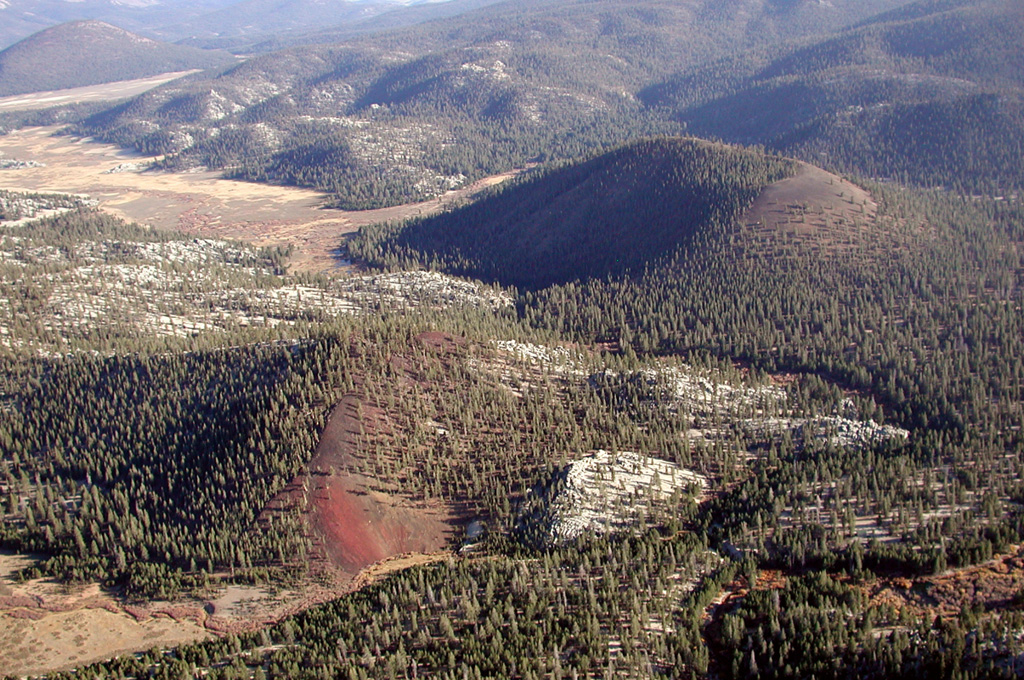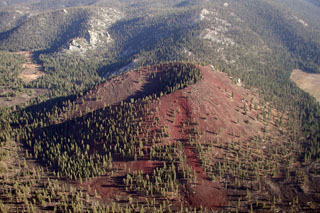Image GVP-10245

Tunnel cinder cone (lower left) and South Fork cone (upper right) are seen from the NW with Ramshaw Meadow at the upper left. The South Fork cone was erupted about 176,000 years ago and produced the largest lava flow of the volcanic field, which traveled 10 km to the west, possibly as far as the floor of Kern Canyon. Tunnel cone to the north of South Fork (Red Hill) cone is undated, but its lava flow is overlain by glacial deposits and it is thought to be only slightly younger than South Fork cone.
Photo by Rick Howard, 2002 (courtesy of Del Hubbs, U S Forest Service).
![]() This image is made available under the Creative Commons BY-NC-ND 4.0 license terms.
This image is made available under the Creative Commons BY-NC-ND 4.0 license terms.

Golden Trout Creek
